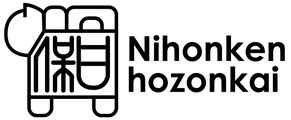Technical terms
On the following pages, you will repeatedly encounter some technical terms from the world of Nihon Ken. We would like to explain them here in summary form, as a kind of reference. Therefore, we will not provide explicit definitions again in the following texts.
Color varieties
Aka = Red A predominantly red coat; minimal black hairs permitted.
Goma = Sesame An even mixture of red and black hair.
- Is divided into 3 further strokes. -
Aka-Goma = red sesame More red than black hair.
Goma = sesame Even mixture of red and black hair.
Kuro-Goma = black sesame More black than red hair.
Shiro-Goma = white sesame More white hair (base tone).
Kuro = black and tan. Black and brown/tanned or b & t. Black fur with some red and white.
Shiro = white/cream white to cream-colored fur
Pinto = spotted Is an irregularity in the coat color. Spots, piebald - white which is the normal
Color interrupts. It is an error or an error index and not in any standard
permissible. In the Shiro stroke, it is not important, since white on white is not visible,
but remains uncontrolled here. White coloring up to the shoulders and
beyond that, Pinto is equivalent.
Tora = Brindle A coat pattern similar to that of a tiger and zebra. The stripes
go roughly vertically but more tone in tone and not so clearly defined
as in the examples above. Short striped/tabby.
Aka-tora = red brindle More red hair.
Chu-tora = medium brindle with an equal amount of red and black hair
Kuro-tora = black brindle More black hair.
Urajiro
= literally means back or underside and white. This refers to the white or cream-colored markings in all color varieties. These are found on the ventral (belly) parts of the body and legs, as well as the cheeks and muzzle. Ideally, they continue smoothly into the tail all the way to the tip.
Sashi-o
This is the technical term for a tail that is carried in a sickle shape. It doesn't necessarily have to have contact points, but can also be carried freely.
The standard standard defines the "rising sun" tail as normal and desirable. The tail is carried curled on the back, leaving a hole through which one can see. The tip should ideally point downward. Anything deviating from the standard (e.g., a tip pointing upward) should be considered a "flaw."
Maki-o
This is the technical term for a twisted/curled tail. Differentiations are made between right-hand twist, left-hand twist, double twist, and "taiko drum" twist. Commonly seen in Akitas and Shibas.
Tachi-o
This is the technical term for a "sword rod," meaning it is carried almost completely upright like a sword. Kai and Kishu often have this rod shape.
Yotsume
= means something like "four eyes." This is the white marking above the eye on B & T dogs. A must in the standard!
The essence of Nihon Ken - fundamental and innate nature
Kan'i = spirited strength and dignified grace
Ryousei = faithful devotion and gentle obedience
Sobuku = traditional, sober and unadorned elegance






